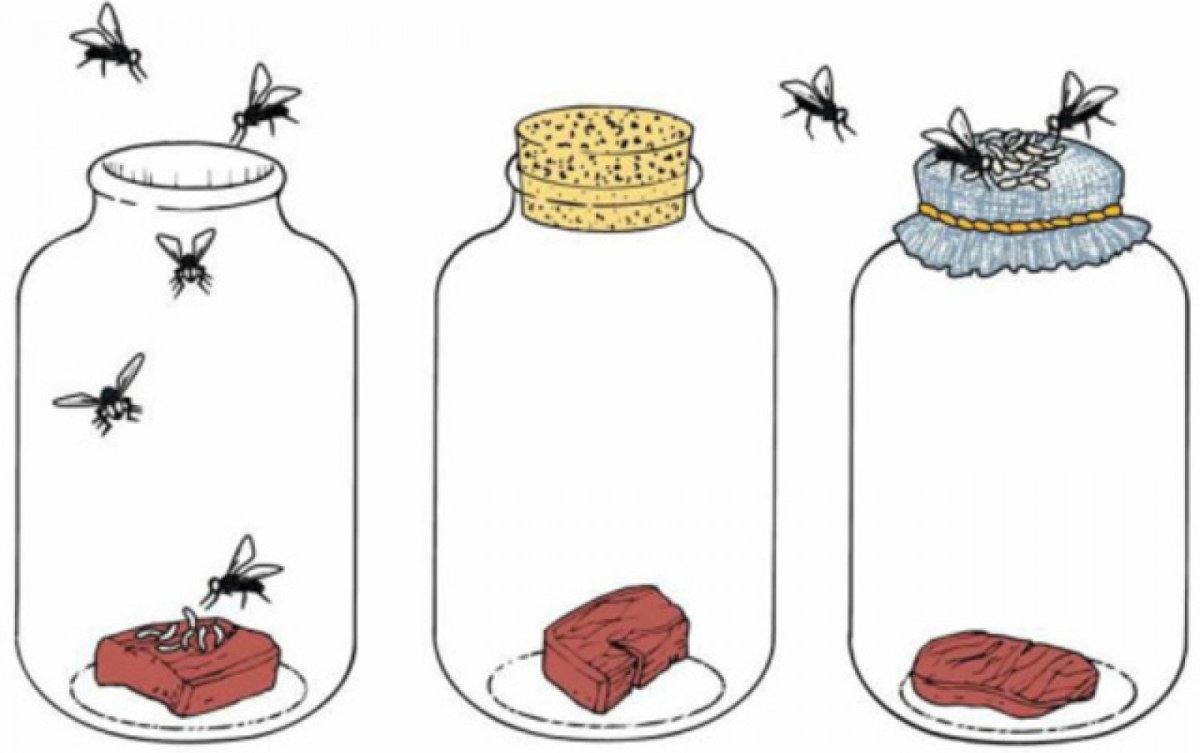We will explain here; Spontaneous Generation Examples. Have you ever noticed that after it rains you see a lot more worms? We now know that worms tend to stay underground because their skin needs to be moist in order to breathe. When it rains, the ground is covered in water, so they can move freely. However, people used to believe that instead of hatching from the eggs of other worms, worms were created when dirt and water formed mud.
“Spontaneous generation is an incorrect and outdated hypothesis about the possibility that life forms can emerge from non-living things”.
This is the idea of spontaneous generation , an outdated theory that living organisms can originate from inanimate objects. Other common examples of spontaneous generation were that dust creates fleas, maggots arise from rotting meat, and bread or wheat left in a dark corner produces mice.
Spontaneous Generation Examples You Must Know
1.Bougonia
One of the first accounts related to spontaneous generation was that of the Roman poet Virgil. He described, by way of recipe, the process by which synthetic bees could be made. Readers were instructed to beat a bovine calf to death, covering its mouth and nose before placing the carcass on a bed of cinnamon and thyme sticks.
He noted that the creatures would magically appear “first without limbs, but soon with wings”, presumably this refers to worms, which subsequently turn into bees.
Virgil called the process described in the recipe “Bougonia.”
2.Spontaneous generation of mice
The “recipe” for making a mouse calls for sweaty underwear to be placed over an open-mouthed jar containing wheat husks inside for about 21 days.
A simple explanation: Mice like to eat wheat, and with the ease of getting into a jar and finding a dark, safe place, they will most likely be home and have some young in the new nest.
3.Scorpions
The European chemist Jean Baptiste van Helmont claimed that scorpions can be made by carving a slit in a brick, filling the hole with basil, and covering the arrangement with another brick.
After leaving it in the sun for a couple of days, one could return to brick formation and be surprised to find that
Other examples
- Moist soil after a flood was believed to create amphibians such as frogs and toads.
- Litter on the streets was thought to breed rats.
- Salamanders were thought to be born inside fire (they often hide inside logs and were probably trying to escape the fire!).
- Oyster shells were believed to form when the earth solidified around them and the “vital heat” made the creature inside grow.
- Crocodiles in Egypt were thought to have emerged from the mud with sunlight as the catalyst.
The refutation of the theory of spontaneous generation
Francesco Redi, 1626-1697
Francesco Redi was an Italian physician and the first scientist to suspect that the theory of spontaneous generation may be flawed, so he set up a simple experiment. He placed the fresh meat in two different jars, one with a muslin cloth on top and the other open. A few days later, the open jar contained worms, while the covered container did not. He saw this as proof that maggots had to come from fly eggs and could not be generated spontaneously.
John Needham, 1731-1781
More than 100 years later, John Needham, an English naturalist and avid supporter of the theory of spontaneous generation, conducted an experiment in which he boiled a broth and poured it into a stoppered flask; At the time, people were aware that the boiling process killed microorganisms which they called “animacules.” After a while, the broth filled with microorganisms, a revelation to Needham, who claimed that they had arisen by spontaneous generation. His experiment was challenged by the fact that he did not heat the broth long enough and his animaculas were resistant to heat
